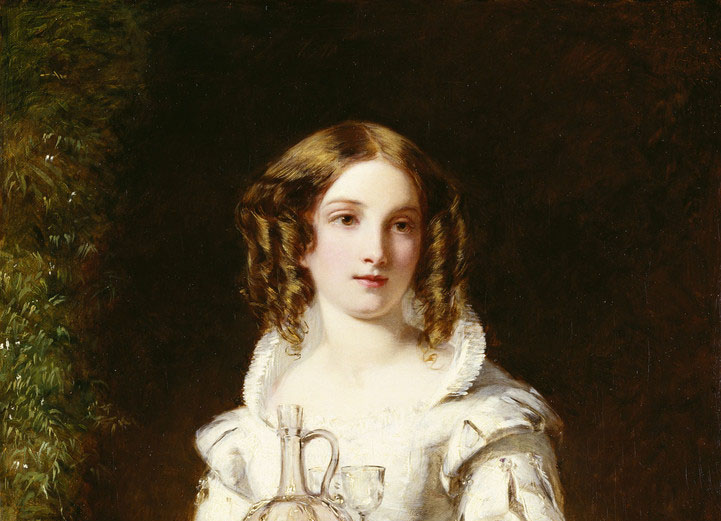Historically, some royals were put off by the plot's bawdy elements. However, its local setting and vision of provincial English life - encapsulated in the character of 'sweet Anne Page' - gave it an enduring appeal.
Much royal interest focused on the identity of 'Herne's Oak', the haunted tree in Windsor Home Park that forms the backdrop for the play's final scenes. In 1863, when a possible 'Herne's Oak' blew down, Queen Victoria commissioned a series of items from its wood. In the process, she created a Windsor equivalent to the trade in relics from ‘Shakespeare’s mulberry tree’ in Stratford-upon-Avon, first established in the eighteenth century.
The Merry Wives of Windsor, and ‘Herne’s Oak’ with it, therefore inserted both the royal family, and Windsor Castle, into the popular conception of the national poet – and England's physical landscape.




![A handwritten bill, with a printed heading. In the top right corner is a coat of arms including a crown, a lion and unicorn, and topped with three feathers, showing the business's royal connections. The printed header readers: "32 Ludgate Hill London. Bo[ugh]t of Rundell Bridge & Rundell, Goldsmiths & Jewellers, To Their Majesties, His Royal Highness the Prince Regent, Her Royal Highness The Princess Charlotte, His Royal Highness the Duke of York & all the Royal Family." The number 25919 is stamped just above. Handwritten at the top of the page is the addressee, "His Royal Highness the Prince Regent." The rest of the page consists of a handwritten itemised list of purchases: "1618 18 Oct. Mounting part of the Mulberry Tree planted by Shakespear in Gold for 5 Toothpick boxes £15.15.00. [Ditto] 2 [ditto] £13.13.00. Engraving Inscriptions on the above 12/00. 1817 13 Feby Repairing & new boiling the Orders. [ditto] on 2 Bars & remixing [ditto]. Soldering on two golds pins to [?] of Golden Fleece. 2 new enamelled centres to Golden Fleece. 22 [Feby] Altering Brilliant Garter lengthening ditto & 10 Brilliants added to the sides, new [?] etc. 6 April A Snuff Box mounted & lined with Gold with profile of His Royal Highness the Prince Regent." The sums are listed on the right hand side and the total at the bottom carried forward is £349 10s 6d. A pencil note below '18 Oct' reads "in King's Audience Rm Windsor."](https://images.cogapp.com/iiif/sharc/bill-rundell-and-bridge.tiff/full/372,/0/default.jpg)

![A map of labelled "Windsor Little Park," showing the town, castle and river Thames, with the surrounding parkland. A drawing of Windsor Castle is inset in the top left corner, next to a decorative scroll with the dedication "To the most Noble Charles, Duke of Marlborough, Knight of the most Noble Order of the Garter &c &c &c. This Plan of the Town and Castle of Windsor and Little-Park, Town and College of Eton, Is most humbly Inscrib'd by His Graces Dutiful Obedient Humble Serv[an]t W. Collier." Individual features are labelled, and a key on the right identifies smaller details. In the top right corner is a plan of proposed changes to the Gardens. Below the dedication is a long avenue of trees, labelled "Queen Elizabeth's Walk." Just beside these is another tree: a hand pointing to it labels this one "Sr John Falstaff's Oak."](https://rct.resourcespace.com/iiif/image/39845/full/372,/0/default.jpg)





